In many of our articles, information in one or another way relating to the serpent or dragon symbol arises quite often. Mentions of snakes and serpent / snake images are found everywhere, beginning with mythology, arts and architecture of nearly every nation and up to constellations reproduced in grandiose temple complexes on the Earth. Serpent symbolism was partially covered in the articles Gudea’s Goblet and The serpent biting its own tail as a symbol of the Universe. The subject has proved to be so extensive and interesting that we’ve decided to dedicate several more publications to it.
Today let us bring to your attention an encyclopaedic article sent to us as a comment to the analytical research In quest of... North America of the 11th century… Indian tribes, Cahokia and Fort Ancient (link). It provides an overview of the most widespread and famous interpretations of the serpent symbol in various countries and cultures.
1. The duality of serpent symbolism
2. Positive symbols
3. Negative symbols
4. Cosmogonic serpent symbols
5. Tribal serpent symbols
6. A snake as a symbol of wisdom
7. Serpents / snakes in fertility cults
8. Snakes, alchemy and healing practices
9. Adders
10. Cobras
11. Pythons
12. Grass snakes
A SERPENT / SNAKE is a universal and most complex of all animal symbols, as well as the most widespread and apparently one of the oldest. The serpent / snake / dragon image is present in many ancient legends, folk tales and even modern ethno-folk songs. Provoking a mixture of respect and fear, this animal is covered with a mythical halo.
A serpent and a dragon are often interchangeable, and in the Far East no distinction is made between them.

Serpent symbolism is multi-aspect and semantically profound. A serpent / snake may symbolise both male and female principles, as well as the androgenic principle (self-reproduction). It’s a strongly pronounced phallic symbol, the impregnating male power, the “husband of all women”. However, such analogies that combine male and female symbols in a serpent / snake do not fully explain the universal serpent symbolism.
As a killing creature a snake means death and destruction; as a creature that regularly changes its skin it signifies life and resurrection. A coiled-up snake is associated with the cycle of phenomena. It signifies the solar and lunar principles, life and death, light and darkness, good and evil, wisdom and blind passion, healing and poison, conservation and destruction, spiritual and physical revival.
The sixth year of the Oriental (Chinese, Korean, Japanese) twelve-year calendar cycle is dedicated to the snake. A snake is a symbol of wisdom, while a coiled-up snake biting its tail is a symbol of eternity.
The duality of serpent symbolism
Symbols of protection and destruction which are present in all snake / serpent myths indicate a snake has a dual reputation and is a source of power if it is rightly used, but it is potentially dangerous and often becomes an emblem of death and chaos, though life at the same time. It may be both a symbol of good and a symbol of evil. Such duality that makes one balance between fear and worship favours the fact that a serpent appears either as a primogenitor or as an enemy, and is considered to be sometimes a hero and sometimes a monster.
In nearly all Gnostic schools, a serpent was understood either as a symbol of the Higher World or as a chaotic principle (the son of Yaldabaoth). Yet, sometimes a serpent simultaneously symbolised good and evil, although such two serpent images are distinctly divided. By the way, we can observe the same thing nowadays in oriental countries and among other peoples.
Positive symbols

An example of a positive serpent symbol is the kundalini concept, where a coiled-up serpent symbolises internal power, psychic or vital energy dormant at the base of the spine. The kundalini energy is called the “serpent power” and sometimes depicted as a coiled-up snake with heads on both ends.
In Tantrism, two snakes twisting around a central pillar represent an ancient symbol that illustrates a major concept of ethereal physiology: the ascending serpent energies beget a vortex of an energy that transfigures a whole human being.

Images of a snake nailed to a cross, as fond in medieval Christian art, became a symbol of resurrection and superiority of spirit over flesh.
In the religion of Druids – the primeval inhabitants of Europe – the serpent cult played such an important role that tribal chiefs had an honorary title of the Serpent. Everyone who was initiated into the sacred Druid rank had to utter a cult formula: “I am Druid, I am a builder, I am a prophet, I am a serpent.”
The Assyrians regarded a serpent as a symbol of life (in Assyrian and Arabic the word snake originates from the root to live).
In Ancient Egypt, a snake was a symbol of the Sun and god Osiris, as well as a heavenly river symbol. There are also images of goddess Isis where the upper body part is human while the lower one is serpentine. Amun and Aton worshipped in Ancient Egypt were snake deities. Furthermore, a snake symbolised a conqueror of pharaoh’s enemies and supposedly incinerated them with its fire. It was embodied in the so-called Uraeus – the pharaoh diadem – as a protective emblem of supreme power. In the broader sense, Uraeus (literally meaning a serpent) is a snake twisting itself around a solar disc (Horus) or a cobra with a lion’s head. It decorates headdresses of Osiris and many other deities. Esoterically Uraeus symbolises initiation into concealed wisdom, which is always associated with a serpent image. Esoteric initiation sacraments used to be called serpents (this reminds of a gospel statement:”Be wise (shrewd) as serpents (snakes)”).
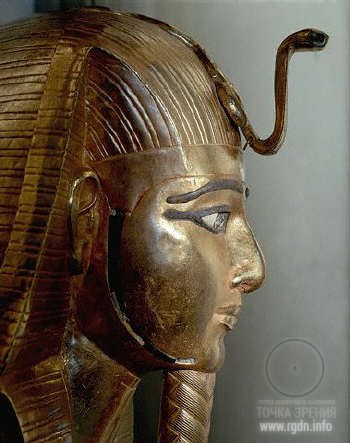
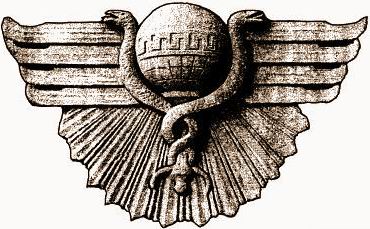
In the Antiquity there was an opinion that snakes had been fathers of some mythical deities and heroes, including Alexander of Macedon who was said to be conceived by Zeus that had appeared as a snake. In Greek myths, the founder of Thebes Cadmus sowed serpent / dragon teeth from which the Thebes elite later emerged. In Elis, there was a special reverence of Sosipolis, “the Saviour of the World”, “the divine child” that appeared as a snake before its birth. A snake was also an inalienable attribute of the divine creator of the world and life.
In India, Shiva is known by many names, including the King of Snakes. Among numerous images of Vishnu avatars, the most famous is the one where Vishnu is lying as if half-asleep on the coils of the world serpent Ananta, while his spouse Lakshmi, the goddess of beauty and happiness, is sitting at his feet. In the legend of Krishna, Kaleyeni (the minister of goddess Kali) is the king of snakes, whereas Nisumba, the wife of king Caisa, is “the daughter of a snake”. Moreover, Hindu yogis called the author of Yoga Sutras Patanjali “a divine snake”. Generally speaking, snakes are nearly always present in images of Hindu deities. In this country snakes are worshiped as the geniuses of heaven, and encountering a snake on the road supposedly brings happiness. Furthermore, in India and some other countries snakes often turn out to be guarders of sacred places, water sources and treasures. Such tradition is associated with the symbolism of fertility characteristic for snakes as well as with a popular belief that precious stones are solidified serpentine saliva.

On Samoa Islands, there is deity Savevziumo symbolically represented as a man with a serpentine lower part of the body. Owing to its endless length enveloping all islands in the ocean, a snake symbolises the deity’s omnipresence.
There is a legend In Chinese folklore that snakes reward virtuous people with pearls. Japanese emperors bear the title of Mikado meaning “the son of a serpent” and are believed to have originated from a heavenly serpent.
The Nahuas people who created one of ancient civilizations in pre-Columbian America along with Maya Indians used to call themselves “people of the serpentine race”. The Empire of Хibalba was known under the name of the Kingdom of Snakes. Humboldt tells that in Mexican feasts which played a role of Christian mysteries a snake was an emblem of the progenitress of humankind. The progenitress had the name of Tsihua-Cohuatl literally meaning “a woman with a snake”. As a matter of fact, the snake cult is widespread all over the banks of Mississippi as well as in Central America, and local snake images are notably similar to Hindu ones.
There were mythical snakes of another kind however. It turns out there existed snakes that lived with male and female healers. Everyone who desired could either “cultivate a snake in a cock egg” or buy one. Snakes were sold because no one had the right to keep them for more than three years. They were said to be bringing wealth. At the same time people not quite believed it was possible to gain wealth in such an easy way, therefore the legend contains a funny reservation: snakes do can bring wealth but not big one, and sometimes such wealth is even hardly noticeable.
Negative symbols
As for the frightening part of serpent symbolism, it obviously includes prototypes of dragons and sea serpents (western folklore) or serpentine hybrids, e.g. the children of Echidna (Hydra, Chimera) and the snake-tailed dog from the underworld (Cerberus) in Greek mythology, which symbolise numerous dangers catching people in their life. A bite of a venomous snake caused the death of Eurydice, Orpheus’s wife. Eurydice got into the underworld where the snake-tailed Minos judged dead souls. Thus, killing a snake was a feat, especially if it is regarded as a symbol of fight against the power of fathers and elders as in the legend of Heracles (Hercules) who smothered two snakes when he was yet a baby and later on conquered the Lernaean Hydra. In order to establish his cult in Delphi, Apollo had to kill dragon Python that had reared the terrible monster Typhon.
In Egypt, the first feat of grown-up Horus was killing a serpent. On the other hand, the soul of every deceased had to fight with Apep snake and overcome it or die.
In India, the bloodthirsty goddess Kali was half-woman half-snake. The first feat of young Krishna was his victory over a giant serpent, although this is a mere symbolic repetition of Vishnu’s victory over Kalinaty serpent. Birds associated with the light, e.g. an eagle, a falcon or the legendary Garuda, were often depicted killing snakes, just like many deities and heroes.
In Persian Zoroastrianism, a snake is one of the worst signs betokening the appearance of Satan, and it symbolises the darkness of evil. Ahriman (Ariman) was thrown down from heaven to the earth in the form of an enormous serpent.
In Tibetan Buddhism, “the green snake” is the name of one of the three major animal instincts inherent in a human being – hatred.
Tsi Seu, the Chinese genius of evil that got a swelled head over the Almighty Lord, is first and foremost a giant serpent. A snake is one of the five harmful animals in China, although sometimes it appears in positive roles, too. The Japanese main demon is also a serpent that rose against God because of pride. There is a legend in Japan, dedicated to the heroic victory of young Iomato over a snake.
In German mythology, Thor and Beowulf killed serpents-dragons, but died themselves in the fight. Siegfried’s feats, described in the German Song of the Nibelungs, start with a victory over dragon Fafnir. In Scandinavian mythology, the elder son of the fire god Loki is an embodiment of evil and represents a serpent that endeavours to entwine the world with its lethal coils and kill all living creatures with its venom.
In western folklore, serpent symbolism is mostly negative because of the snakes’ forked tongue associated with hypocrisy and lies and bringing unexpected and instantaneous death. A snake is blamed for causing that people have lost God’s gift of eternal life, and not only because of the story of Adam and Eve, but also owing to the Babylonian Epic of Gilgamesh where the main character covered an enormous distance to find a magic plant that restored youth, but when he found it a snake stole it.
Judaic and Christian traditions present a serpent as an enemy and even identify it with Satan. Therefore, in western arts a snake has become a major symbol of evil, sinfulness, temptation and lies. It is depicted at the foot of the cross as an emblem of the original sin, in the scenes where Christ was tempted, and under the foot of Virgin Mary. In memory of the fact he was poisoned, Apostle John is depicted with a bowl around which a snake has twisted, but the poison failed when John crossed the bowl. St. George the Winner riding a horse and striking a serpent with his spear is the patron of Moscow and Georgia.
According to the famous ancient Roman theologian Tertullian, early Christians called Jesus Christ the Serpent of Good, while in arts a copper snake reminded of Jesus’ words: “A human son can ascend to heaven.”
In medieval Europe, killing adders was considered to be a godly act. Snakes were an indispensable attribute of witches whose potions included parts of snake bodies. There is the following allegory widespread in popular tales: evil words and curses turn into snakes that fall from one’s mouth. Legends of many-headed snakes, namely the terrible Typhon which Zeus persistently fought against for a long time, gave rise to fairy tales about serpents / dragons with which valorous heroes fight, chopping off one head after another. In Russian folk tales serpent images emerged much later, in the times of the Mongol yoke, and symbolised the worst enemy.
Cosmogonic serpent symbols

In people’s understanding, a snake is first and foremost a magic symbol of the forces that begot life, and sometimes a snake / serpent symbolised even the Creator Himself.
An image of a snake protecting eggs laid by it is associated with an enormous serpent twisting around the whole world and supporting it or helping the earthly disc to float in the surrounding ocean. Thus, the Hindu creator god Vishnu rests upon the coils of the enormous serpent Ananta (Shesha). Goddess Indra kills the serpent of chaos Vritra and liberates the fruitful waters guarded by Vritra. The enormous serpent of earthquakes Vasuki helped to churn the sea of which the dry land was released. In African myths, a rainbow snake reaches the heaven with its head, resting on the underworld waters with its tail. In Scandinavian myths, a huge unpredictable snake of storms Midgard embraces the entire world. A snake head crowned prows of Viking ships, performing both protective and deterrent functions. In South America, people used to explain eclipses by the fact that the Sun or the Moon was swallowed by a giant serpent. According to an ancient Egyptian myth, the barge on which the Sun travels every night across the kingdom of the dead is threatened by serpent Apep, and the help of another serpent is needed for the Sun’s barge to appear above the horizon in the morning. In Mexico, the divine feathered serpent Quetzalcoatl referred to in folklore all over South and Central America combines the forces of heaven and earth in himself.
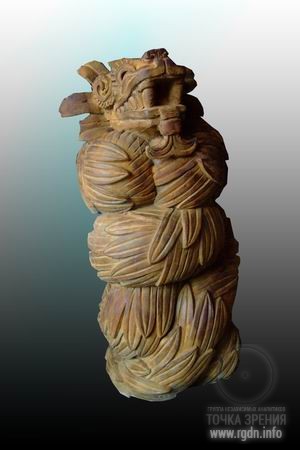
The diversity of serpent / snake symbols is explained by the fact that snakes are in permanent contact with the forces of the earth, waters, darkness, and the underworld. A snake is a solitary, cold-blooded, reticent, often venomous animal that swiftly moves without legs and is capable of swallowing animals that are many times larger, as well as of rejuvenating by throwing off its skin. The snake’s body shape and other characteristics engender numerous comparisons, e.g. with waves and hilly terrains, flatland rivers, vine and tree roots, rainbow and lightning, as well as with the spiral movement of space. A snake has eventually become one of the most widespread animalistic symbols. A giant serpent is depicted on the 400-metre Great Serpent Mound in Ohio.

Gogon legends say that the creator god Amma gave birth to the two Nommo twins – half-humans half-snakes from whom the human race originated. One of the Nommos was a blacksmith. Dogon forefathers were supposedly immortal and able to turn into snakes, but after their fall their souls failed to find peace for a long time. An oracle that cut a big serpent of wood gave them a place for refuge and repose.
The Dahomey tribe worships the divine serpent Aydo Khvedo, an embodiment of the rainbow, the movement of celestial bodies and a rain herald. In the worldview of African peoples, a snake symbolises not just the heavenly divine nature, but also demonic forces.
On the island of Bali there are forces dedicated to water snakes. According to an ancient Balinese manuscript, two snakes twisted around the world turtle Bedawant – the foundation of the universe.
Peoples of tropical Africa associate snakes with the idea of immortality because they regularly change their skin, i.e. their shell of physical existence.
Ouroboros (Uroboros) – a snake biting its own tail – is a symbol of not only eternity, but also of divine self-sufficiency.
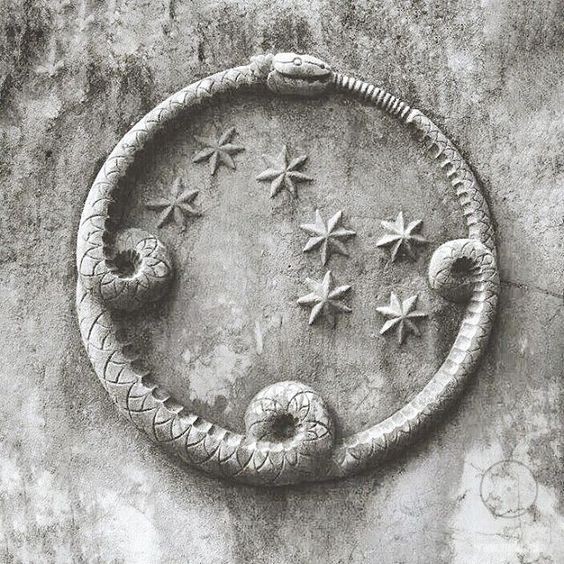
Tribal serpent symbols
Snakes are often regarded as tribal ancestors (totems) in African and North American legends, as well as in China where Nüwa and Fuxi were serpentine primogenitor deities, whereas home snakes as legend says were ancestor spirits and granted good fortune.
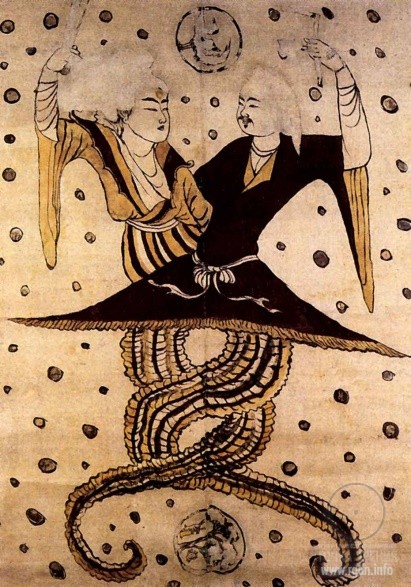
A snake as a symbol of wisdom
Totem symbolism combined with a belief that snakes know the secrets of the earth and can see in the dark endows them with wisdom or a gift of prophecy. “Be as shrewd as snakes and as innocent as doves”, Christ said to his disciples (Gospel of Matthew, 10:16). The Greek word dragon (which means not only “a monster”, but also “a snake with a piercing look”) is etymologically associated with eyesight. In arts, a snake is an attribute of goddess Athena (Minerva) and the allegoric figure of Prudence, signifying the gift of prevision. According to a legend, the Trojan soothsayer Cassandra owed her talent to sacred snakes of Apollo which licked her ears when she was lying in his temple.
Serpents / snakes in fertility cults
A serpent twisting itself around the forbidden tree in heaven is a scene with numerous parallels in folklore. In an ancient Greek myth a snake guards Hesperidean golden apples and the tree on which the Golden Fleece is hanging. A tree and a snake twisting itself around it represent an emblem of the Middle Eastern goddess of fertility Ishtar. Judging by numerous images of other goddesses holding phallus-like snakes in their hands as symbols of fertility, these animals played a very important role in agricultural cults of the Mediterranean and the Near East. Initiation rites in honour of Sabasia deity in Asia Minor imitated a snake passage through the body of a cult minister. Snakes winding around legs and arms of satyrs in Bacchic festival scenes remind of the antique rituals in honour of fertility deities as well as of vine. Moreover, snakes are characteristic for Semitic fertility cults where they were used in sexual rites.
Snakes, alchemy and healing practices
A snake twisting itself around a caduceus is an alchemic symbol of Mercury is his primary state. The caduceus represents brimstone swallowed up by Mercury.

Snakes are often used as symbols of healing practices and medicine. This is partially explained by an ancient belief that snakes throw their skin off to restore youth, and possess the secret of eternal life. According to Greek and Roman myths, the god’s messenger Hermes / Mercury got a caduceus – a winged staff capable of reconciling opponents. When he decided to test it, he placed it between two fighting snakes, and they immediately twisted around the staff in mutual peace. Snakes twisting around a caduceus symbolise interaction between opposite forces. Carl Jung considered them to be an emblem of homeopathic medicine which is based on a statement formulated as “like cures like”.

A snake twisting itself around a knotty staff is an emblem of the Greek god of healing Asclepius (Aesculapius) who is believed to be able even to raise people from the dead.

Both Asclepius’s staff and the caduceus are used in heraldry to mark belonging to medicine. The symbol of modern medicine is a snake twisting around a bowl.
Adders
Just like all snakes / serpents, adders symbolise insidiousness and evil. According to St. Augustine, an adder as one of devil’s images means a sin, especially envy. It is believed that it envied the happiness of Adam and Eve in Eden.

Cobras
Both in India and Egypt, the power of a snake in its more dangerous expression is symbolised by a vertically rising cobra with its hood open.
In India, cobra deities (nāgas) are regarded as sacred and represent symbols of protection. Legend says, once during his travels Buddha got exhausted walking across a burning hot desert and fell half dead. A cobra crept by, opened its hood and covered Buddha from mortal sunbeams as if with an umbrella (later on Buddha was depicted sitting and covered by a cobra with seven hoods). When Buddha came to his senses in the shade, as a sign of gratitude he touched the cobra with his two fingers, and it remained with his fingerprints (two round spots looking like spectacles) forever.

Indian cobras are often depicted with gems on their hoods, which symbolise spiritual values. Yet, at the same time cobras symbolise anxiety and fear.
Pythons
Pythons are usually associated with the water element as a vital substance (the symbol of inundation) and with the male impregnating power. A python gains phallic meaning in initiation rites, although it’s neither the only nor the most important of its symbolic meanings. Just like all snakes, pythons symbolise potential vital energy. A python may also signify a healing power.
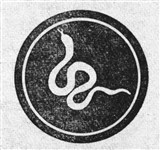
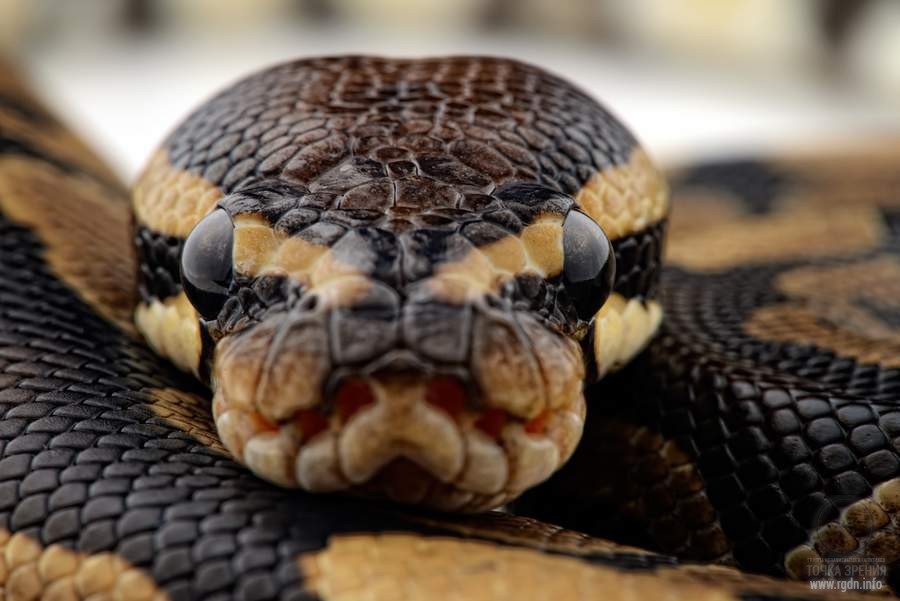
Grass snakes
In the Middle Ages grass snakes were regarded as a symbol of home protection. Thus, in Switzerland, Austria and the Baltic lands they often lived in human houses. People believed grass snakes caused no harm to house owners, even protected them and could attack the owners’ enemies (grass snakes were considered venomous in those times).
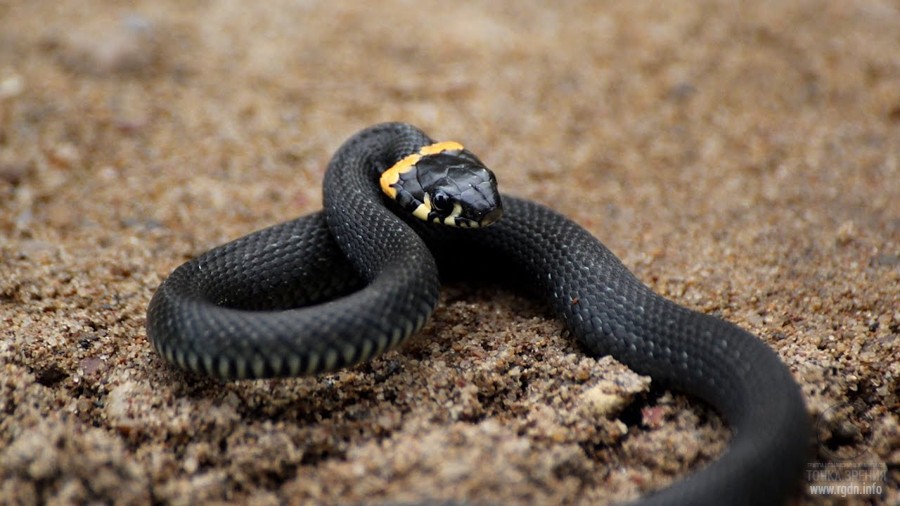
We now see how diverse and mysterious the symbols of serpents / snakes, these truly extraordinary creatures, are. Nevertheless, the information given in this article is far from being complete. In subsequent publications we will continue studying this fascinating and extensive subject, so stay with us, it will be interesting!
Prepared by Julia Matveyeva (Russia)
 Serpent symbolism
votes:
331
Serpent symbolism
votes:
331
|

Project Aim










Leave comment